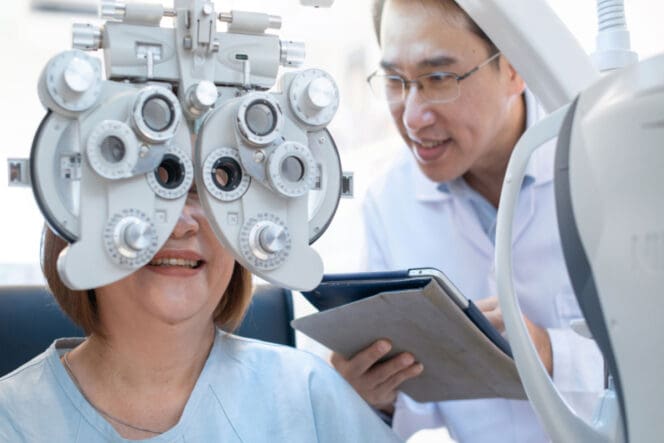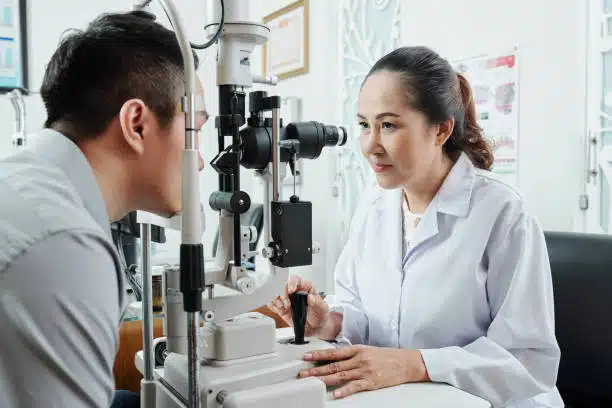The Significance of Regular Exams with an Eye Doctor Optometrist
The Significance of Regular Exams with an Eye Doctor Optometrist
Blog Article
Checking Out the current Technological Advancements in Optometry and What They Mean for Eye Doctors
From the precision of Optical Comprehensibility Tomography to the nuanced insights provided by AI-driven analysis devices, these developments are establishing new criteria in person evaluation and treatment. As these developments penetrate the practice, optometrists are faced with the difficulty of embracing these tools to improve client results.
Technologies in Diagnostic Equipment
Progressing the area of optometry, developments in diagnostic devices have transformed the means eye care specialists examine and identify aesthetic disabilities and ocular conditions. The previous decade has witnessed significant technical improvements, making it possible for more accurate and detailed assessments.
An additional key innovation is the intro of sophisticated corneal topography systems, which map the surface area curvature of the cornea with accuracy. These tools are especially helpful for fitting contact lenses and diagnosing corneal problems. Digital retinal imaging has actually transformed traditional ophthalmoscopy, providing in-depth, breathtaking views of the retina that promote detailed visual exams.
The growth of wavefront aberrometry has also been vital, making it possible for the analysis of refractive errors with unrivaled accuracy (Eye Doctor). This modern technology helps in tailoring rehabilitative lenses and boosting surgical results for refractive surgical procedures. Jointly, these diagnostic advancements encourage eye doctors to deliver superior client treatment, guaranteeing early intervention and customized treatment strategies, eventually boosting visual health and wellness outcomes
AI in Individual Monitoring
Structure on the foundation of cutting-edge diagnostic tools, the unification of artificial intelligence (AI) in individual monitoring stands for a transformative leap for optometry. AI systems are significantly employed to boost efficiency, precision, and customization in client care.
Additionally, AI-driven platforms help with streamlined person communications and management procedures. Automated organizing, digital assessments, and individualized follow-up plans not just boost person contentment yet additionally maximize time monitoring for experts. These systems can triage clients based on the necessity of their problems, ensuring that those in vital need get timely focus.
Furthermore, AI enhances decision-making by providing eye doctors with evidence-based referrals and treatment pathways. By integrating information from electronic health and wellness documents, AI devices provide understandings that educate clinical choices, minimizing the threat of errors and improving patient end results. As AI remains to develop, its function in patient management will likely expand, reshaping the landscape of optometric treatment.
Developments in Retinal Imaging
In the realm of optometry, retinal imaging has actually witnessed exceptional technological advancements that are boosting diagnostic capabilities and patient care. Innovations such as Optical Comprehensibility Tomography (OCT) and fundus digital photography have actually changed exactly how optometrists analyze the retina and envision.
Boosted imaging methods like OCT angiography are more refining analysis precision. Optometrist Chino. Such improvements assist in the recognition of minute retinal changes that might signify illness development.
Moreover, improvements in synthetic knowledge are augmenting retinal imaging by allowing automated evaluation of large datasets. These systems help eye doctors in determining patterns a sign of pathology, therefore boosting analysis precision and performance. Jointly, these technologies are changing retinal imaging into a foundation of modern eye care, enhancing end results and expanding restorative possibilities.
Teleoptometry's Expanding Function
Teleoptometry is progressively coming to be an important component of eye treatment, driven by advancements in digital interaction and diagnostic tools. This is particularly helpful in underserved and rural locations where access to specialized eye address care is often limited.
The assimilation of synthetic intelligence (AI) more improves teleoptometry, enabling the evaluation of aesthetic data and assisting in the detection of ocular conditions such as glaucoma and diabetic retinopathy. AI-powered algorithms can rapidly translate complicated imaging data, providing eye doctors with important insights that strengthen scientific decision-making.
Furthermore, teleoptometry sustains continuity of treatment with smooth integration with electronic wellness records (EHRs), permitting eye doctors to keep detailed individual histories. When seeking advice from with different practitioners., this makes sure that individuals get tailored and consistent treatment even.
In spite of these benefits, difficulties continue to be, including making certain data protection and handling patient expectations. Nonetheless, teleoptometry stands for a considerable stride in the direction of more accessible, reliable, and patient-centered eye care. As technology develops, its role is positioned to expand better.

Future Patterns in Eye Treatment
A myriad of innovative trends is set to reshape the future of eye treatment, driven by technical developments and the advancing needs of people. One significant trend is the combination of expert system go to this site (AI) in diagnostics, which guarantees to improve the accuracy and efficiency of eye exams. AI algorithms can evaluate substantial amounts of information from retinal pictures, potentially finding problems like diabetic retinopathy and glaucoma earlier than typical methods.
Furthermore, individualized medicine is getting traction in optometry, with genetic screening notifying customized therapy strategies. This approach aims to optimize person end results by customizing treatments to private genetic accounts. Wearable technology, such as wise contact lenses, is likewise coming up, providing real-time monitoring of intraocular pressure or glucose levels, thus supplying continual insights into systemic and ocular wellness.
The adoption of augmented fact (AR) and virtual truth (VIRTUAL REALITY) in training and person education and learning is one more emerging pattern. These modern technologies provide immersive experiences that can boost understanding and abilities both for clients and eye doctors. As these fads advance, optometrists must stay abreast of technical developments to supply innovative care, making sure enhanced person outcomes and satisfaction in the vibrant landscape of eye care.
Verdict

Collectively, these diagnostic improvements equip optometrists Find Out More to supply premium individual care, making sure early intervention and tailored treatment techniques, ultimately improving visual health results.

As these modern technologies proceed to advance, eye doctors have to adjust and incorporate them into practice, inevitably maximizing process efficiency and boosting the standard of eye treatment supplied to patients.
Report this page